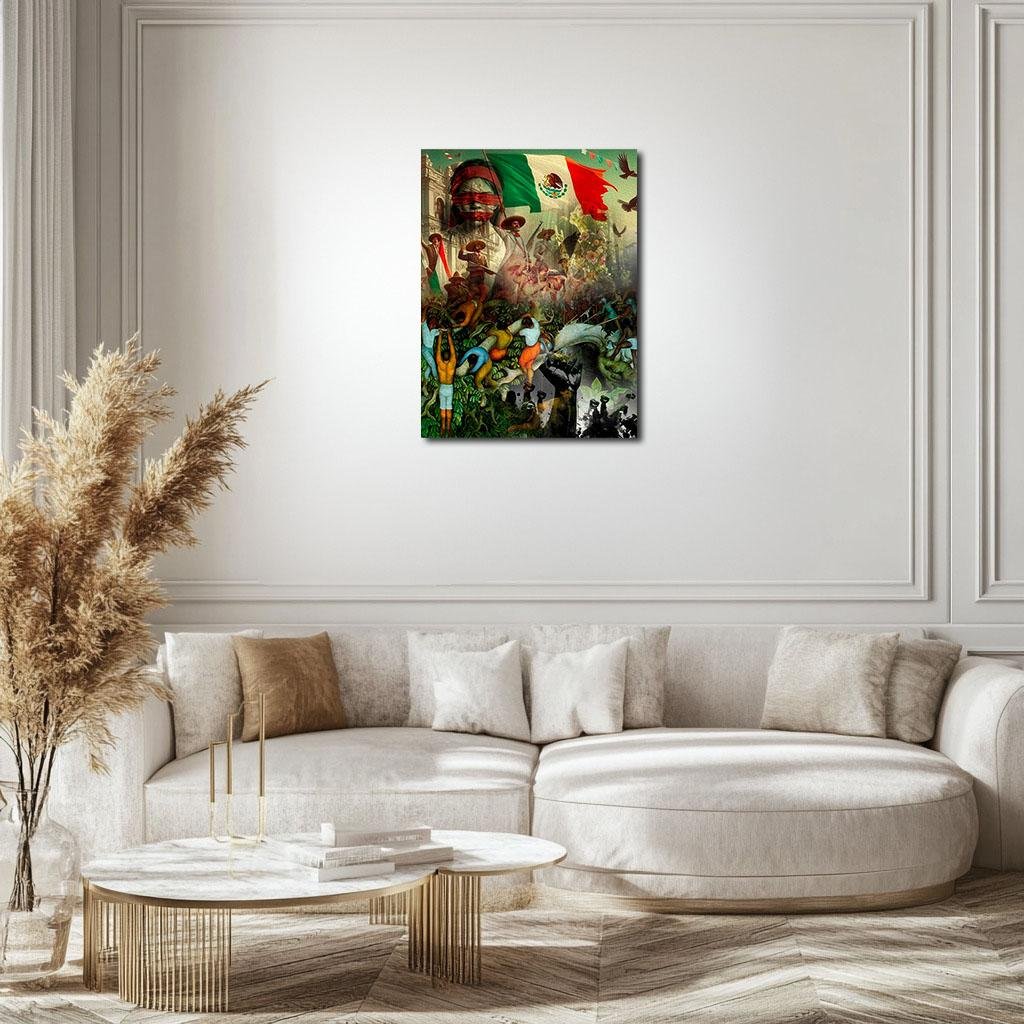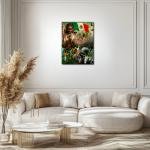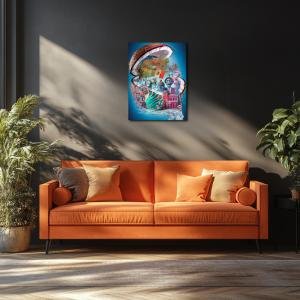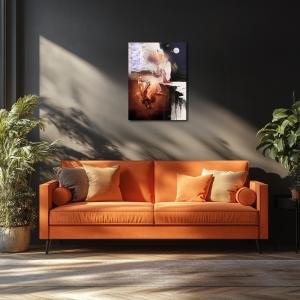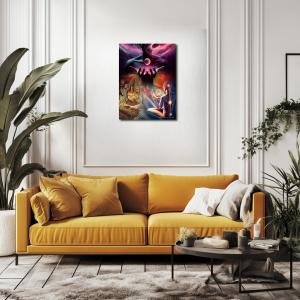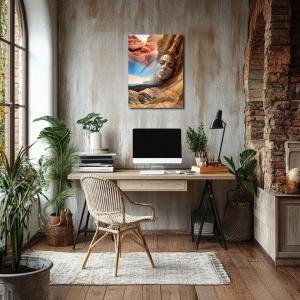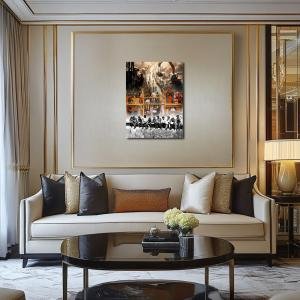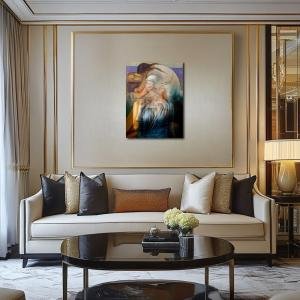Entering the City: A Dream of Liberation and Roots
Entering the City is a symbolic reinterpretation of Diego Rivera’s revolutionary spirit, merging peasant resilience, urban resistance, and sacred identity into one composite ascent. Blending layered jungle greens, revolutionary reds, and veiled whites, the piece charts a nation’s journey from land to uprising, from ancestral roots to civic awakening. Through ghostlike figures, patriotic veils, and birds in flight, it explores what it means to reclaim space—not only in cities, but in history itself.
Please see Below for Details…
Hotline Order:
Mon - Fri: 07AM - 06PM
404-872-4663
This conceptual collage, titled Entering the City , reconstructs Diego Rivera’s vision of revolutionary transformation into a multilayered, symbolic narrative where history, struggle, and cultural rebirth converge. Rooted in Rivera’s dynamic aesthetic and political idealism, the composition builds a vertical tapestry of Mexico’s collective memory—stitched together with revolutionary fervor, agrarian resistance, sacred femininity, and the haunting echoes of modern protest.
The scene unfolds in waves: the lower terrain thrums with indigenous strength and the spirit of the land, the central band bursts with revolutionary zeal, and the upper realm ascends into the fragile tension between patriotism and justice. This is not a single moment but a chorus of eras—each voice layered atop the other in visual polyphony. The figures do not merely march or harvest; they rise, they resist, they remember.
At the bottom, dark soil tones and deep jungle greens root the piece in the earth—dense, raw, and life-giving. These are the colors of ancestral toil, of peasant bodies intertwined with corn and forest. I wanted these hues to bleed upward as a visual metaphor for nourishment and resistance. Workers bend among oversized foliage, their bodies echoing Rivera’s emphasis on physical dignity. But their actions, here, are abstracted—less agricultural than metaphorical, reaching not for crops but for memory, origin, and identity.
Above them, the iconic silhouettes of armed revolutionaries press forward under the banner of the Mexican flag. They are not frozen in time; they are in movement, mid-transition—crossing not only a physical city threshold but a psychic frontier. Their garments—rendered in tones of dusted ivory, muted sienna, and adobe brown—signal both earthiness and valor. These aren’t men of conquest, but of reclaiming. Their boldness is contrasted with the quiet presence of feminine figures, floral and ghostlike, who trail behind like memories of loss and mothers of rebirth.
Hovering over this revolutionary midsection is the figure of a blindfolded woman wrapped in a transparent Mexican tricolor—her face serene yet covered, her eyes bound not by cloth but by context. This figure emerged during my process as an unexpected spirit-guide—embodying both the promise and peril of nationalism. Her cloak, blending the red, white, and green of the flag with translucent drapery, becomes a conflicted veil. It is beautiful. It is painful. It is unresolved.
Behind her, the architecture of the city rises in stone-gray solemnity. These buildings, evoking the Zócalo and the colonial imprint of urban Mexico, are intentionally bleached in tone—caught between glory and ghost. The city is not villain or hero. It is stage. And as in Rivera’s murals, the city becomes a theatre of the people, their blood and footsteps its architecture.
Flying above and throughout the piece, birds and fists intersect—crows in mid-flight, doves emerging from light, fists raised in silhouette. These elements are symbolic punctuation: of defiance, of uprising, of spiritual upheaval. The birds in particular became crucial as I built the work, representing the uncatchable truth—the stories that escape archives, the songs that rise in every protest.
Color in this piece is both strategy and soul. The deep, jungle greens below were chosen to remind the viewer of Mexico’s indigenous roots, of land as origin and battleground. The reds in the middle layer burn bright—drawn from Rivera’s revolutionary palette—symbolizing both sacrifice and the fire of collective awakening. The upper registers shift to light gold, copper-white, and a veil of muted sky-blue. These are the colors of paradox: of possibility and forgetting, of heaven and veil, of unity and blindness. The Mexican flag itself, bold in placement and faded at its edge, becomes a question more than an answer.
As I created Entering the City , I was guided by a vision of revolution not as a singular event, but as a spiritual migration—one that flows through generations and forms. I saw it not as a war film, but as a living mural—one where saints and farmers, martyrs and street dancers, all enter the city with fists raised and memories intact. Rivera painted the people with weight. I wanted to paint them with wind, with fire, with a pulse. To let their entry be felt as movement, not only seen as image.
Add your review
Your email address will not be published. Required fields are marked *
Please login to write review!
Looks like there are no reviews yet.

